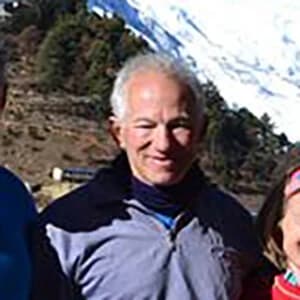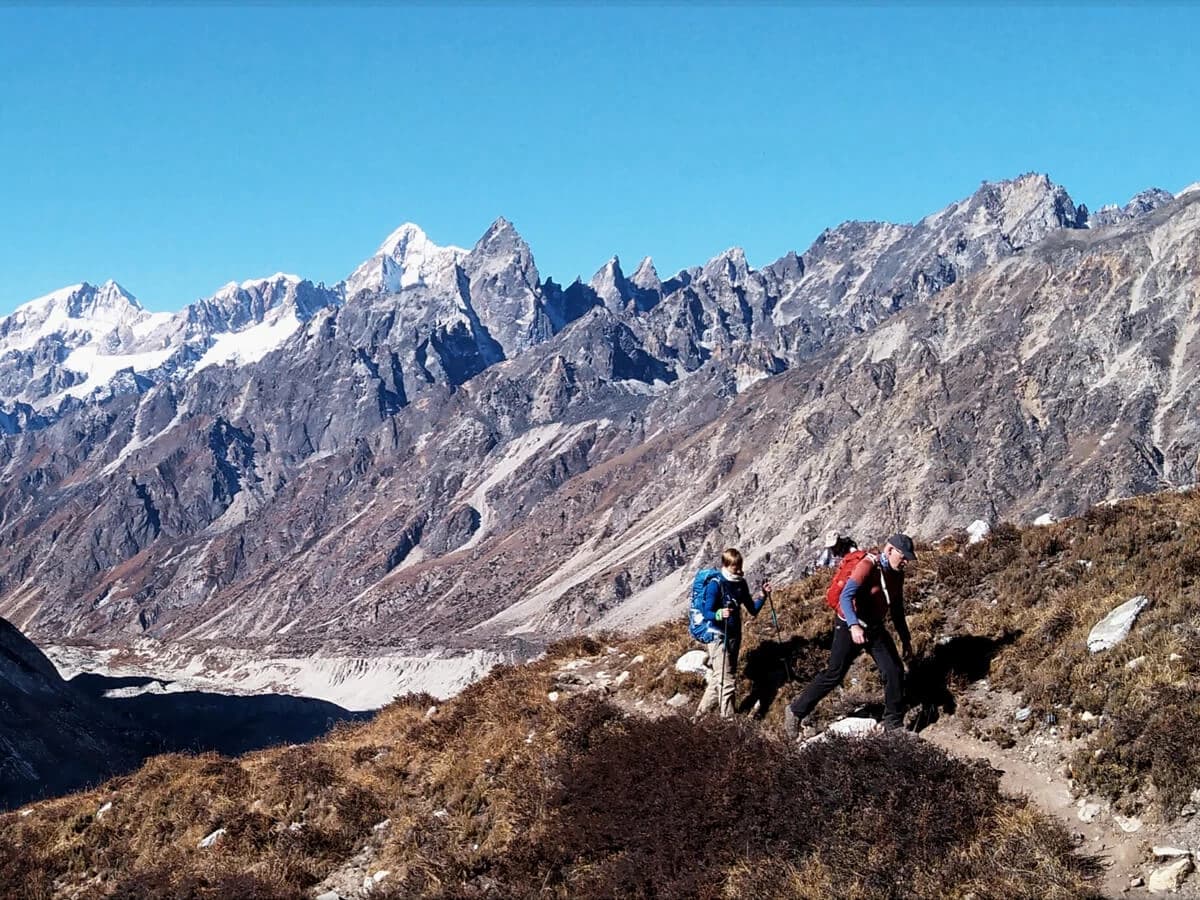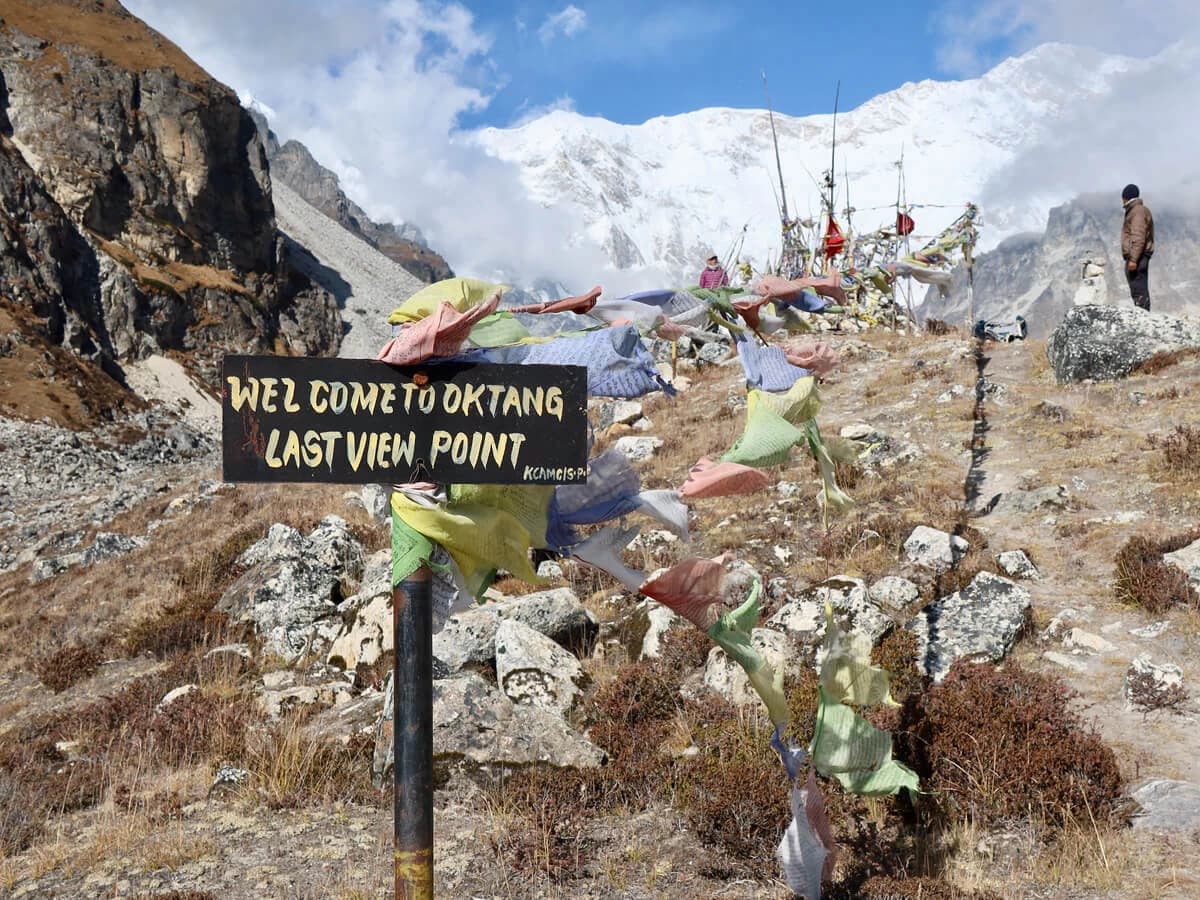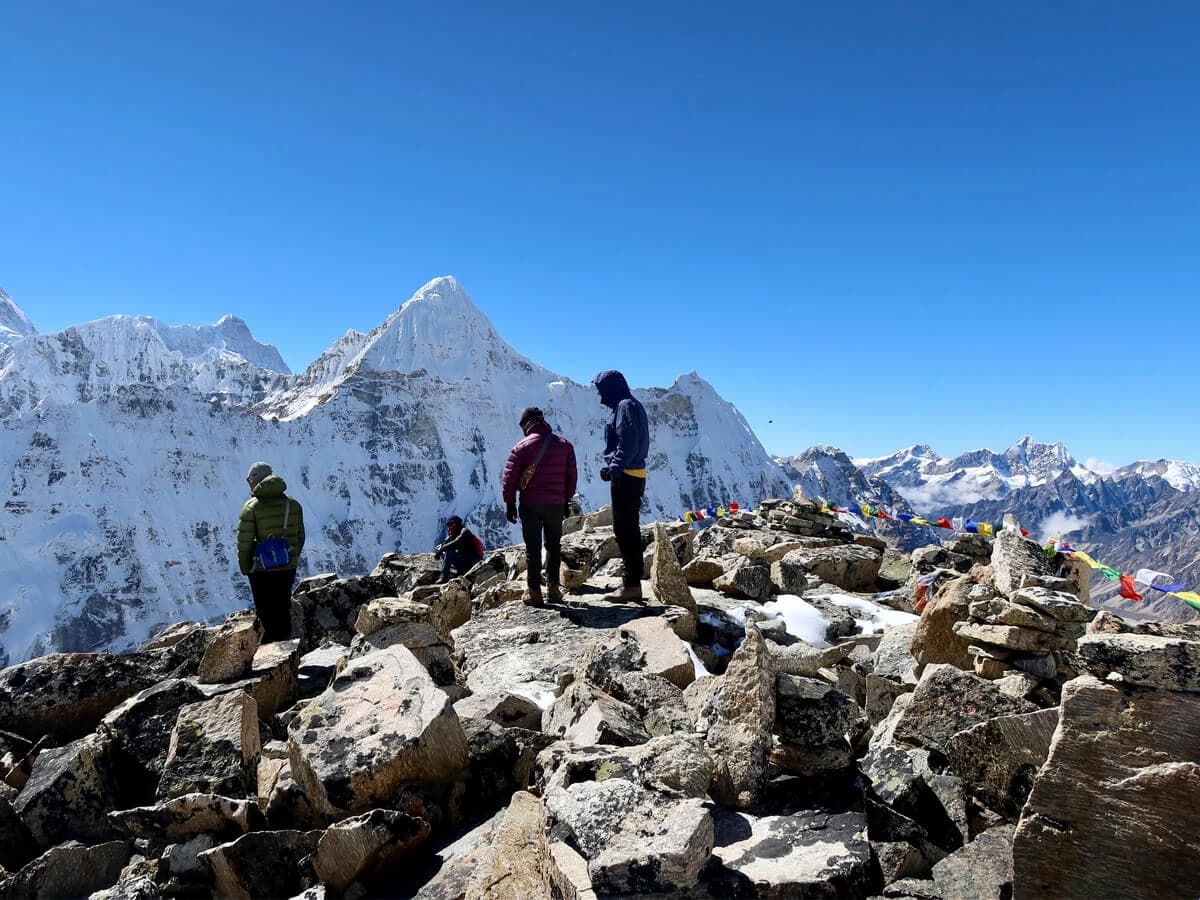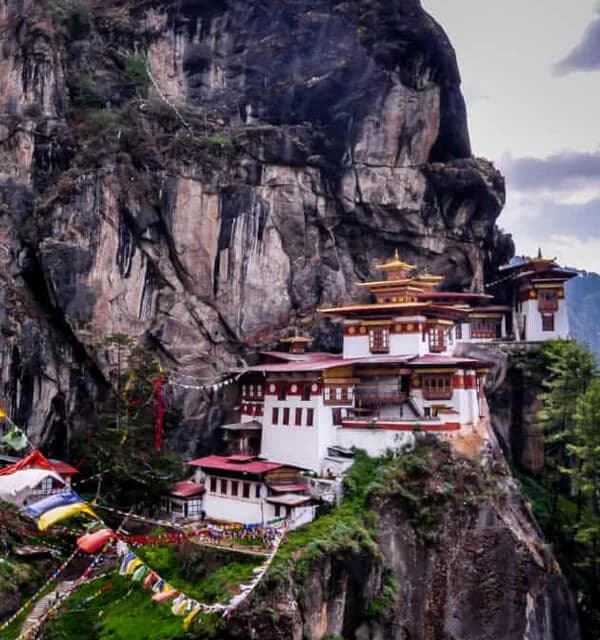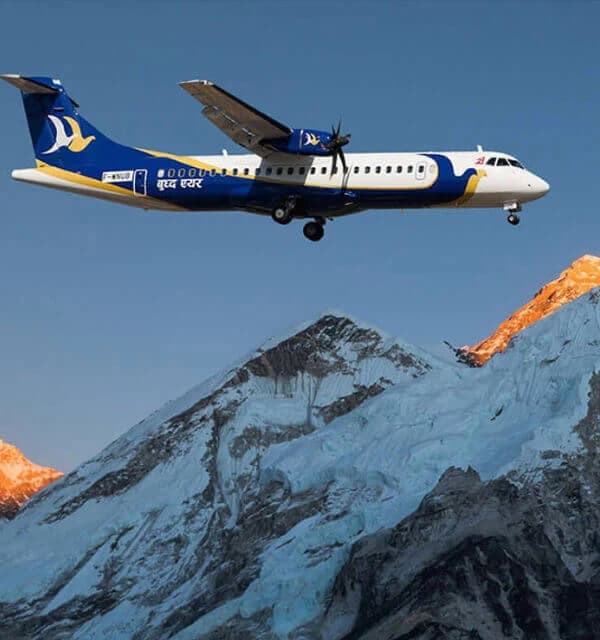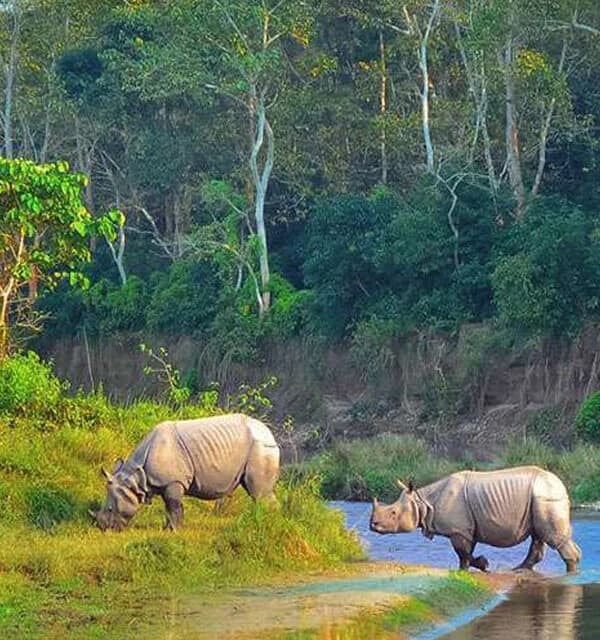Kanchenjunga Circuit Trek, which is one of Nepal’s best adventure treks that lasts 18 to 21 days. It is a complete blend of lush green forest, diverse cultures, and giant peaks, including the world’s third-highest peak; a great trek offers a perfect remote trekking for adventure trekking seekers in Nepal.
Kanchenjunga Circuit Trek - 19 Days
Main Highlights of Kanchenjunga Circuit Trek
- Jannu Viewpoint (4,420m): A mesmerizing panorama of Jannu (Kumbhakarna), one of the world's most technically demanding peaks.
- Kanchenjunga North Base Camp (Pangpema, 5,143m): A high-altitude sanctuary offering awe-inspiring views of the sprawling Kanchenjunga massif.
- Tamo La (Altitude unknown): A scenic mountain pass with sweeping vistas of the lush Ghunsa Valley below.
- Selele La (4,355m): Crossed in deep snow, leaving the views to our imagination—though they were surely spectacular.
- Mirgin La (4,633m): A breathtaking high pass framing panoramic views of Jannu and the distant Makalu.
- Unnamed La: A mysterious, undocumented pass—absent from maps and online resources.
- Sinelapche La (4,700m): The crown jewel of an exhausting day, rewarding us with unmatched views of Kanchenjunga, Rathong Peak, Kabru, the Yalung Glacier, and countless other giants.
- Kanchenjunga South Base Camp (Oktang Viewpoint, 4,730m): A stunning vantage point, though landslides now block access to the historic base camp itself.
Kanchenjunga Circuit Trek Overview
The Kanchenjunga Circuit Trek has been ranked by many trekkers as the best Wilderness Trekking Route in Nepal, an extensive 19-day Kanchenjunga Trekking going deep into the remote mountain ranges on Nepal’s border with Sikkim and Tibet. The trail explores the area around Kanchenjunga, the third-highest mountain in the world. You will see a wide range of scenery, from lush tropical jungle through to rhododendron, chestnut, and oak forests, and then, at higher altitudes, into the alpine zone. You will see a range of Nepalese culture and lifestyles, from Rai and Limbu to Tibetan Buddhist villages. The Kanchenjunga region offers unbelievable trekking, and now, in addition to the traditional full camping trek style, it’s possible to do a teahouse trek to the region as well. Here is all you need to know!
An Ultimate Remote Trek in Nepal, an isolated area in the far eastern region bordering Sikkim (India)
Kanchenjunga Trekking is a tremendously beautiful trek in rural and isolated Nepal's far-estern region, hiking for 19 days to both base camps of the world's third-highest peak (8586 meters / 28,169 feet), and is on the border between Nepal and Sikkim (India). Our well-planned itinerary to Kanchenjunga only covers the trekking routes in Nepal on this site. The usual trekking destinations are the viewpoints near the climbing base camps on the south and north sides of this massive mountain; traversing between the north and south base camps is also highly enjoyable, making for a very pleasing wilderness experience.
A rural area trek, but is it a teahouse trekking?
Yes, it is!
The trek to Kanchenjunga north and south Base Camp can be done entirely as a basic teahouse trek in peak seasons (Sept to Nov and Mar to May). The Kanchenjunga Trekking Route is not an established lodge trek like the Everest Base Camp or Annapurna Route, though the facilities are being rapidly improved on the north base camp side. If you are grateful for a stone hut, a wooden bed, evening Daal Bhat, and daily rough country, you will greatly enjoy this remote trek out of your comfort zone.
How many people Trek to Kanchenjunga a year?
Only about 1,000 trekkers a year trek this place, compared to over 35,000 in the Everest Region of Khumbu, so it is possible to walk blissfully all day and see nobody else. Most people you will meet will be in camping groups, but you may meet some small private groups of teahouse trekkers with their guides and porters. Note that there is considerable exposure on many of the tracks, so don’t go if you have vertigo or a fear of heights.
This matrilineal Limbu (‘the bearer of bows and arrows’) homeland is not highly populated, particularly on the south side, and the people follow animist, Buddhist, and some Hindu beliefs. Culture and Phale and Ghunsa on the northern side are uniquely Tibetan in architecture and religious practice, but surprisingly, the general lack of outward religious signs that characterize the Khumbu region, for instance. There is a focus on tongba, a local drink: warm millet beer served in brass-decorated wooden pots with a straw.
Trekking in December and Mobile Network Access, Conditions of Lodges on the route
The Kanchenjunga Trek can be done entirely as a basic lodge trek in Nepal's two best trekking seasons: spring and autumn. At the start and end of these periods, there may be some lodges closed after December, particularly at higher altitudes. Always contact us or write to your trusted trekking agency before relying on these notes for the latest update. There are toilets in nearly all places, and phone access is limited on the south side. WiFI service is available at Ghunsa and other lower parts. Wilderness Excursion provides tents just in case the lodges are closed, with light meals.
When was the Kanchenjunga first trekked? Local Belief, Myth, and Folklore,
The Kanchenjunga range consists of five individual peaks, of which Kanchenjunga II is the highest among them. People from the Kanchenjunga Region believe this mountain is sacred, as well as the five treasures of snow in the form of gold, silver, gems, grain, and holy books on each different summit. Joe Brown and George Band, part of the British expedition team, first conquered the summit of Kanchenjunga in 1955. The entire range generates four different glaciers, which result in a couple of famous rivers for rafting in Nepal. This is basic Kanchenjunga information.
19 Days, teahouse-based trek to Kanchenjunga is now encouraged and promoted. The government of Nepal is emphasizing the development of infrastructure in Kanchenjunga to support the local economy and its involvement in the tourism sector. Trekking in Kanchenjunga can be one of the most adventurous treks, with close interaction with Tibetan refugees whose settlement is along the Kanchenjunga Circuit.
Kanchenjunga Circuit Trek Itinerary and Distance – How long does it take to complete it?
Formerly, a traditional Kanchenjunga Circuit Trek used to last for 21 to 28 days, depending on the route chosen, a distance of approximately 215 KM long. Now, with the development of roads in rural areas of Nepal hence the route is getting shorter every year. So, the itinerary and length of the Kanchenjunga Circuit Trek in the present days lasts 18 to 19 days, though some expert hikers can complete the trek within 17 to 18 days. You can extend this trek to Lumaba Sumba Pass and even further to Makalu Base Camp.
The 19 Days Kanchenjunga Trek itinerary starts with a Flight to Bhadrapur from Kathmandu, then a long drive to Taplejung, the former typical trek's starting point. Trekkers ascend through diverse landscapes to reach the Kanchenjunga Pangpema (North Base Camp) and the South Base Camp before descending through different villages and passes like Sele La to return to Taplejung and drive back to Bhadrapur to catch the flight to Kathmandu. But now, there is a gravel road beyond Taplejung to Sekethum, which provides a trekking start point. If you find yourself with limited time and are interested in doing it in 14 to 15 days, we are happy to personalize it, creating 15 Days Kanchenjung a Trek
Our 19-day standard itinerary first goes to the north base camp (Pangpema), then turns toward the south to Oktang – also called Okharthanfg. Here is a tour that first goes to South Base Camp and then to North Base Camp, which concludes via Ghunsa – Sekethum – Kanyam, which is a famous Tea garden in Nepal.
Brief Itinerary - 18 Days Trek South to North Base Camp Kanchenjunga Trekking Route
Day 01: Pick from the hotel by our guide, airport transfer - flight to Bhadrapur - drive to Taplejung (2400m):
Day 02: Drive to Hellok and Trek to Yasang: 6 to 7 Hours.
Day 03: Trekking from Yasang to Totong.
Day 04: Trekking from Tortong to Charam (Also spelled Tseram).
Day 05: Rest and acclimatization day at Cheram
Day 06: Trekking from Cheram Ramche (Alo called Ramchaur).
Day 07: Excursion to Kanchenjunga South base Camp (Oktang) – Cheram (retrace)
Day 08: Trekking from Cheram to Selele Camp
Day 09: Trekking from Selele Camp to Ghunsa via Selele Pass
Day 10: Trekking from Ghunsa to Khambachen.
Day 11: Trek from Khambachen to Lonak (also spelled Lhonak)
Day 12: Excursion to Kanchenjunga North Base Camp (5140 m).
Day 13: Trek from Lhonak to Ghunsa.
Day 14: Trek from Ghunsa to Amjilosa.
Day 15: Trek from Amjilosa to Sekathum
Day 16: Drive from Sekathum to Kanyam - The crown jewel of Ilam.
Day 17: Short drive from Kanyam to Bhadrapur – flight to Kathmandu.
Day 18: A Buffer day for unforeseen obstacles in case.
The itinerary provided is a standard, based on our expert guide's knowledge and recommendations. We are more than happy to customize it as per your preference, creating the best plan by Wilderness Excursion with 14 years of Kanchenjunga Trekking experience and knowledge.
Kanchenjunga Trek Entry Permits and Updated Trip Cost 2026:
Trekking to Kanchenjunga requires a restricted area permit (RAP) that costs USD 20 per person for the first two weeks, and additional Kanchenjunga Conservation Area (KCA) costs NPR 2000. The TIMS Card is not mandatory. 14 Days of valid restricted area entry permits cover fairly entire route. As the RAP can be obtained only through a certified trekking company, Wilderness Excursion arranges and covers all the mandatory permits and paperwork within the package cost for 19 days.
We published the best deal for USD 1799 per adult inclusive package for the years 2025 and 2026. The rate is valid until the autumn season of 2026, with Kanchenjunga trek promotions for early bird catches and a group booking discount of 10%. The International Tour Leaders are highly encouraged to grab a remarkable discounted price.
Do I need extra money for this Kanchenjunga Trek?
Yes!
Your package already covers your daily main course meals and lodging costs that you purchase with Wilderness Excursion. Anything apart from food and accommodation will be your extra expenses, such as taking a hot shower, internet, or beverages, etc. We suggest you take an extra $ 15 to 25 a day, though, for other amenities.
And Nepal is now safe to travel, after the (Gen Z) Young People’s Anti-Corruption Protest in September 2025, which had a temporary bad impact on Nepal’s Mountain tourism. It is safe and fully resumed now!
Important Note: A buffer day as a contingency day is important for unexpected delays, unforeseen obstacles, or to allow for rest and recovery, providing a safety net to prevent stress and disruptions from impacting the rest of the hike and travel. So, please allow 1 or 2 extra days in your Nepal travel itinerary while hiking to the Kanchenjunga round trip. Adding extra days creates a flexible itinerary to tackle unpredictable events like bad weather, longer-than-expected trail times, or a desire for more time to set up camp before dark, which makes the Kanchenjunga Circuit Trek more memorable with our experienced Kanchenjunga Trek Guide.
A typical day in the Kanchenjunga Circuit Trek
In the Kanchenjunga Circuit Trek - 19 Days, your typical day starts with a hot cup of tea in the teahouse, followed by a simple trekking breakfast before leaving for the trailhead. The paths are long and varied, winding through terraced fields, dense forests of rhododendron and oak, and remote villages where life feels untouched by modernity. We will walk five to seven hours a day, with steady ascents and descents that may test your stamina. We have a lunch break at around 11:30 or 12:00 PM at a teahouse or a scenic spot, often enjoying spectacular views of snow peaks.
Afternoons bring more trekking, sometimes crossing suspension bridges or climbing toward higher ridges. By late afternoon, we reach the next stop for the night stay in a teahouse provides warmth and basic comforts. Evenings are spent sharing hearty meals, chatting with locals or fellow hikers, sharing your experience, and preparing for the next day. The routine blends physical challenge with cultural immersion, all against the backdrop of the mighty Kanchenjunga massif. Before going to bed, your Kanchenjunga trek guide from Wilderness Excursion briefs you next day's tour plan.
Lastly, the Kanchenjunga Circuit Trek is an extraordinary adventure that offers a profound connection with nature and a glimpse into the heart of the Himalayas. It is a journey for those seeking a challenging and rewarding experience, a chance to explore one of the world's most pristine and captivating mountain regions.
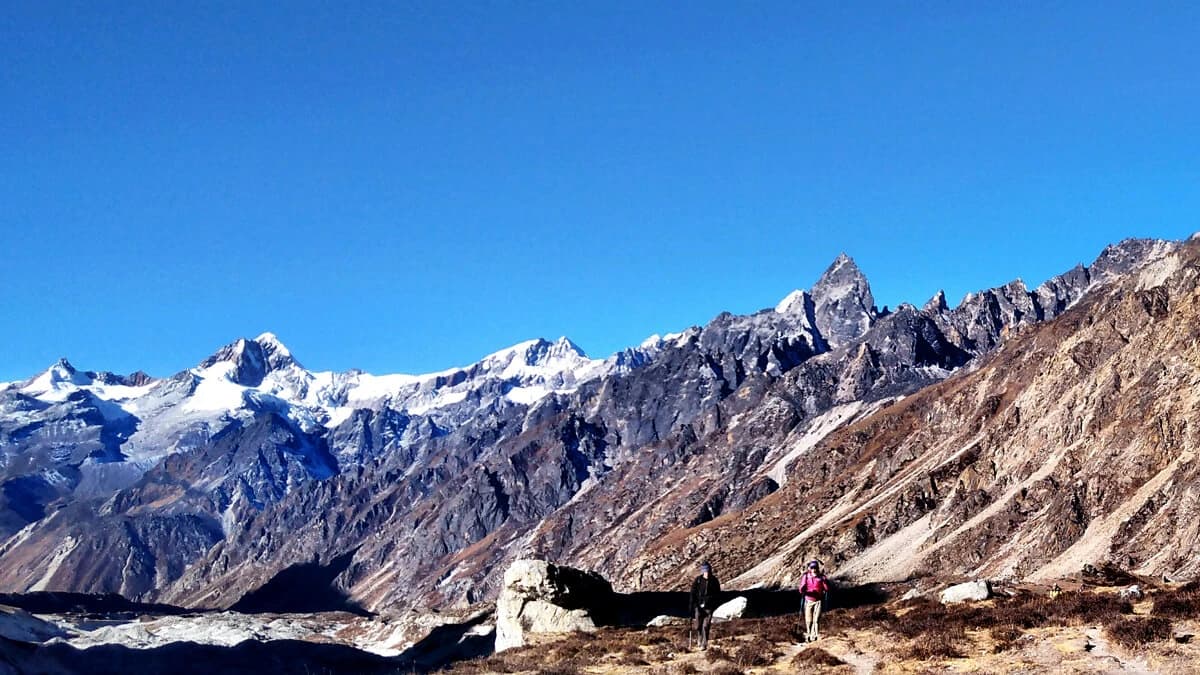
Leaving behind Kathmandu, take the scenic flight to Bhadrapur from Kathmandu, which takes about 45 to 50 minutes. We will then take a public jeep and drive to Tapjelung via Mechi Highway and the tea state at Kanyam. From Kanyam, viewing the tea cultivations on the way toward Taplejung, from where the trek to the Kanchenjunga Circuit Trek begins. Many people halt at Kanyam for the night stay splitting the day for a comfortable short day rather than a long day.
Our second day of the Kanchecjunga Circuit Trek Itinerary starts with the morning breakfast. Finally, we begin walking after two days of the drive. The hike from Sekathum to Amjilosa begins with a climb along the Ghunsa Khola and walking over many bridges along the way, travelling through lush trees, the little settlements of Jonggim and Ghaiyabari, and reaching Amjilosa for the overnight stay.
We take the morning breakfast and hike to Gyabla from Amjilosa today. We carry on to move in our path through a dense forest and trail without a Human settlement. If we are lucky, today, we can spot Red Pandas during our walk. After the demanding climb, we get to view the wonderful view of the mountains and several cascades on the way. We slowly make our way and reach Gyabla village. Overnight in a teahouse.
Our journey is to Ghunsa today. The name Ghunsa means "winter place" in the local Sherpa language. The walk through the woodlands with a wide range of flora and fauna leads us to the Phale village. Ongoing the hike at a pace, we will get to Ghunsa village. Overnight stay in a comfortable teahouse at Ghunsa in our Kanchenjunga Trek.
Today, the 6th day of our Kanchenjunga Circuit Trek is scheduled to rest and get acclimatized. It is very important to separate a acclimatization while doing high altitude after several days of walking. For the adjustment of the body to the altitude, we will have a stroll around and rest and relax at Ghunsa, or make day trip to nangola pass, and nearby lakes. Overnight in a teahouse at Ghunsa.
We begin the day slowly toward Kahmbachen today with the gradual hiking up through an open pine forest and also have the chance to spot wildlife including blue sheep, musk deer, and snow leopards. The track goes through landslide-prone areas. And now, we view the spectacular backdrop of Mt. Jannu also known as Kumbhakarna, encounter the green glacier valleys, and finally approach the Khambachen village for night stay.
As we move further up, we finally approach the high camp before the base camp. The landscape becomes more rugged and alpine, with huge moraines and glaciers dominating the scenery. We encounter other trekkers in the main trekking season, walking toward and returning from the Kanchenjunga North Base Camp on this track. We hike via the Ramdang and come across the Ramdang Monastery. After walking 5 to 6 hours, we reach the tiny settlement of Lonak with a few teahouses.
Embark on a morning hike to Kanchenjunga North Base Camp, also known as Pangpema. The North Kanchenjunga Base Camp lies at an elevation of 5140 m | 16860 ft. From Lonak (also spelled Lhoak) is a popular, challenging ramble that may take 6 hours round-trip, requiring an early start to allow for viewing the magnificent north face of Kanchenjunga and the surrounding peaks before returning to Lhonak for the night. The trail follows the Kanchenjunga Glacier's moraine and is characterized by rocky, unstable, and boulder-strewn terrain, necessitating a good level of fitness, and now this provides proper acclimatization for crossing over Selele Pass to South base camp.
Leaving Sele La Pass behind, we continue our trekking over the high-altitude passes—Sinion La (4,440 m / 14,567 ft), Mirgin La (4,480 m / 14,698 ft), and Sinelapche Bhanjyang (4,645 m / 15,239 ft). Along the way, we are rewarded with breathtaking panoramic views of Mt. Jannu, Everest, Makalu, Baruntse, Chamlang, and Kanchenjunga. Afterward, we descend to Tseram (also spelled Cheram), where we spend the night in a teahouse.
After an early breakfast, we continue our journey across the Yalung Glacier, gradually gaining altitude and moving closer to the stunning mountain vistas. Along the way, the trail offers magnificent views of Rathong (6,682m) and Kabru (7,412m).
Today, we take a day excursion from Cheram (or Tseram) to Kanchenjunga South Base Camp, also known as Oktang or Okharthang. This day trip typically requires an early morning departure to base camp and a return to Ramche for an overnight stay. The ascent to the base camp is a multi-hour hike through a glacial landscape, followed by a descent and overnight rest in Ramche.
Leaving the towering high snow-capped peaks behind us and the serene walk through rhododendron forests brings a sense of peace. Our trek begins with a descent and continues to Tortong, following the Simbuwa Khola and offering enchanting views of the Himalayas along the way. We will spend the night in Tortong.
From Tortong, we persist in descending to the Amji Khola passing through Lasiya/Lamite Bhanjyang (3415m) and Dhupi Bhanjyang (2665m). Walking past the steep slope area, we reach Yamphudin village. There is the Kanchenjunga Conservation Area checkpost in Yamphudin, where our permits are checked if we had begun our trek with the Kanchenjunga South Base Camp first. Our guide also suggests there is a nice alternative trail to Taplejung via Yasang or Tapsang.
Drive to Ilam and overnight in Kanyam, a beautiful hill station in eastern Nepal. It is popular for tea gardens, with many attractive and lush tea gardens in the hills of Ilam. Besides the spectacular views of the tea gardens, there are many other places to visit in Ilam.
After breakfast, drive to Bhadrapur and take a flight to Kathmandu. Rest and relax in the afternoon in Kathmandu. Wilderness Excursion sends a private car or private van, as per group size, to pick up from the domestic airport and transfer to the hotel.
This is our standard itinerary. It can be customized or slightly changed if required considering your pace and trekking habit that cause a change of day-to-day plan.
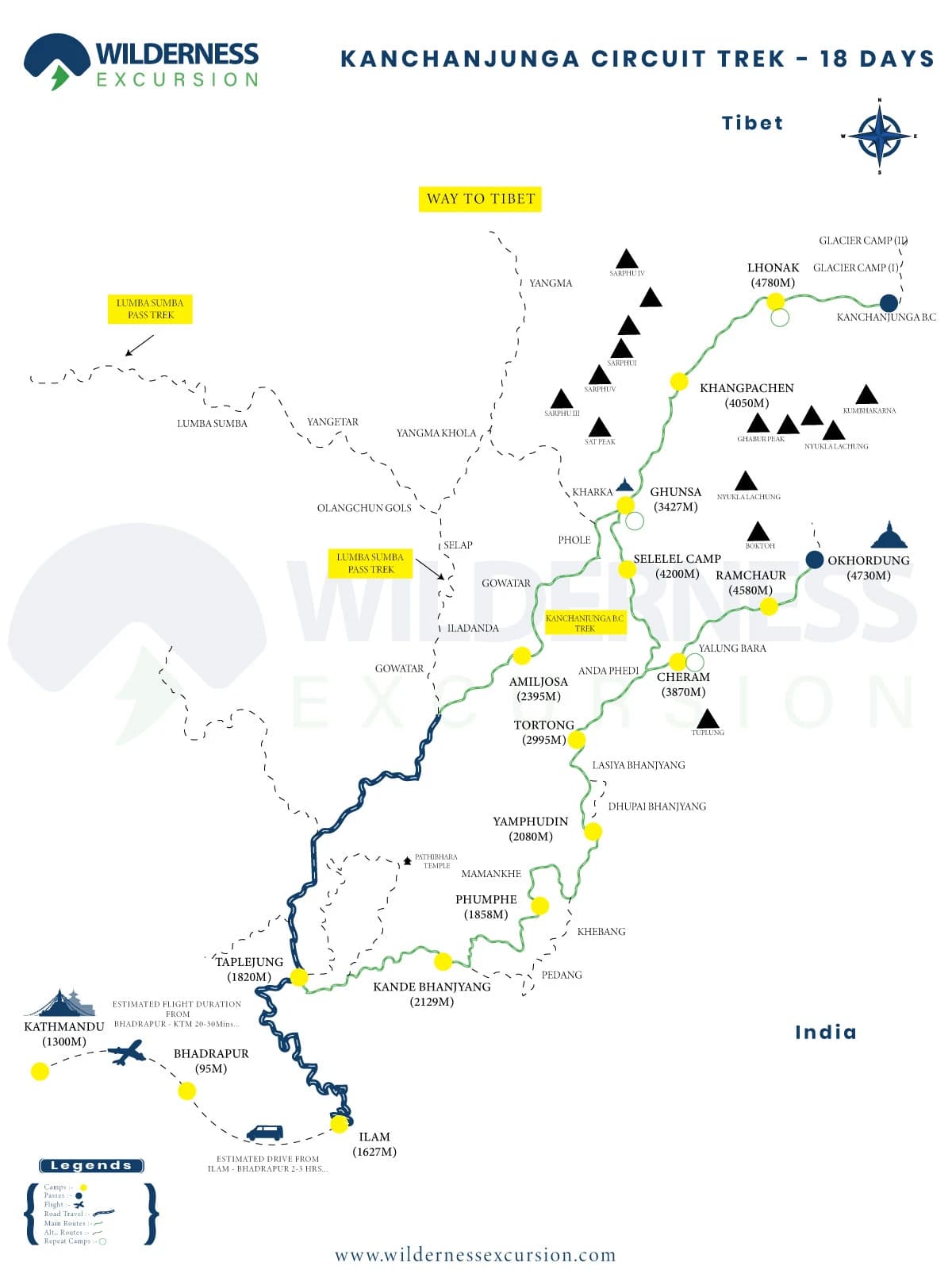

- Domestic airport pick-up and drop-off by private car or van, depending on group size.
- A registered, experienced, English-speaking Kanchenjunga Trek Guide.
- Assistant Sherpa guides to support the group and help the potters, as per the group size.
- All necessary Sherpa porters to carry your main pack and camping gear.
- Kathmandu-Bhadrapur-Kathmandu round-trip flight.
- Ilam to Bhadraour by public bus.
- Meal: 18 breakfasts, 19 lunches, and 18 dinners.
- Tea house accommodation during the trek.
- Guide and porter fees with all their expenses.
- Kanchenjunga Trekking permits and documentation fee.
- All local taxes and airport taxes for domestic flights,
- Transfers, accommodation, and meals in Kathmandu.
- Alcoholic beverages, drinks, and appetizers.
- Personal nature expenses: e.g., laundry, toiletries, internet, phone calls.
- Guided sightseeing in Kathmandu.
- Personal travel insurance and trekking gear.
- Rescue operation charge in case of emergency.
- Any operating costs that arise due to a change of the tour because of landslides, political trouble, strikes, etc.
- Tipping your guide and porter.
To enhance your Kanchenjunga Circuit Trek, at Wilderness Excursion with decades of experience and expertise in arranging and guiding in Kanchenjunga, we offer you a selection of add-ons to make your booking easier through one door to save your time. We have also added additional logistic services that you can choose if you would like to.
- Double Hotel Room Booking Cost USD 50: A deluxe room in a 3-star category boutique hotel centrally located in Kathmandu costs USD 50.
- Airport Shuttles Cost USD 15 One Way: If you ask, we can provide airport pick-up and drop-off service. It will cost USD 15 each way.
- Chitwan Tour Cost USD 179: An inclusive 2 Nights 3 Days Chitwan National Park Safari Tour Package costs USD 179 per person
Enjoy the flexibility of a private tour designed just for your group. As a local operator in Kathmandu, we can arrange departures on any date that works for you. Please get in touch to create a custom itinerary and receive a price.
Kanchenjunga Trekking Difficulty, Altitude Gain, Safety Guidelines, and Preparation!
Kanchenjunga Trekking is classified as one of the challenging trips in eastern Nepal due to its remoteness, off-trail, high altitude, rare walked rugged trail. You will gain altitude significantly, reaching 5140 meters (16860 ft.) elevation in a week and cross over Sele La Pass to enter the south base camp side, walking in mountain terrain 6 to 7 hours a day makes it demanding but loved by adventure trekking passionate.
To ensure your trek is done smoothly without any obstacles, you have to follow the safety guidelines:
- Hike Slow: It is always wise to hike gently by allowing your own pace. No rush!
- Proper Acclimatization: You must acclimatize properly, stay hydrated, and avoid alcohol.
- Less altitude gain: Ascend no more than 500 meters per day when you reach above 3,000 meters.
- Follow the guide's advice: Listen to your guide’s suggestion and share if the symptoms of sickness occur
- Train your body: Proper physical exercise prior to your trek departure for a month at least, you can go juggling, treadmill running, and cardio exercise is a must.
- Consult the doctor and inform your agency (Wilderness Excursion) of any health issues.
- Travel Insurance: Travel Insurance is Essential for potential emergency evacuations that should cover air rescue evacuation and medical treatment.
For the Kanchenjunga Trek, what are the best months of the year or the best season to go trekking?
To embark on the adventurous Kanchenjunga Circuit Trek, the ideal time is Spring (March to May) and Autumn (September to November). These high trekking seasons provide clear and stable weather with pleasant temperatures and tremendous mountain views, making the trails safe and conditions comfortable for trekking. Avoid trekking in the rainy months, June to August, which falls in the monsoon, and due to heavy rainfall and landslides, makes the trail wet and may cause landslides, and winter (December to February) due to extreme cold, snow, and freezing temperatures.
Trekking in Spring (March to May):
Advantages:
- Rhododendron Blooms: The mountainsides are alive with vibrant rhododendron and wildflower colors, making a beautiful experience.
- Milder Weather: Temperatures are moderate, making the trek more comfortable, especially at higher elevations.
- Wildlife Encounters: With fewer bushes to obstruct views, the chances of encountering wildlife, such as red pandas and musk deer, are higher.
- Clear Skies: The weather is generally more reliable, providing excellent visibility of the peaks.
- Warm temperature, gets warmer day by day
Disadvantage:
- Light rain and thunderstorms sometimes.
- Can be misty and hazy weather and low visibility
Autumn (September to November)
Advantage:
- Clear Views: The post-monsoon skies offer excellent, unobstructed views of Kanchenjunga and the surrounding Himalayas.
- Stable Weather: The weather is stable and pleasant, with moderate temperatures ideal for trekking and clear visibility.
- Dry Trails: Trails are dry and safer, making it easier to navigate high passes and other challenging sections.
Disadvantages:
- Crowdy trail and lodges: During the peak trekking season, the trails can be more lively with other trekkers, increasing the crowd. However, given its remoteness and uneasy access, Kanchenjunga is less less-traveled compared to other treks such as EBC or ABC.
- Temperature Drops: The temperature decreases day by day if you are trekking in the latter end of October or November, and as the season approaches December then it can be very cold.
Clothing and Gear List for Kanchenjunga Circuit Trek
For the Kanchenjunga Circuit Trek, Wilderness Excursion suggests you make a list and pack smartly by focusing on a layering system for clothing, including thermals, fleece, a down jacket is a must, and waterproof outer layers. Essential gear includes a sturdy 40 to 50L day pack and first aid kit, water bottles, purification tablets, and personal documents, arranging lightweight, quick-drying materials. And your porter will carry most of your equipment, so focus only on your personal, daily essentials for your backpack. And the rest will be carried by our professional porter.
Packing list:
- Backpack 25L to 35L or a Day sack as per your preference.
- Strong rucksack or large holdall to be carried by porter (limit 25kg).
- 3 to 4-season sleeping bags. (Lodges also provide quilts)
- Trekking pole, headlamp, or torch light
- Water bottle. Water purifier (tab/device), also bottled water buying available.
- Toiletries and basic medicines (do not forget if any medicine prescribed has been taken).
- Travel towel, preferably quick dry.
- Gadgets (Camera, phone, and its chargers). Nepal has universal plugs.
- Rain gear (poncho, raincoat), there is a rare chance of rain in November.
Body Wear
- T-shirt/shirts as per your preference, windbreaker jacket, or hard-shell jacket.
- Down jacket or similar warm jacket, thermal wear
- Sunglasses, sun hats, sun creams.
- Warm hat, gloves, buff or muffler (optional).
Leg wear
- A decent trekking boots/shoes, extra camp shoes, or sandals
- Trekking Pants, warm trousers, or thermal pants,
- 3 to 4 pairs of socks, blister Band-Aid if required
- Ice spike & gaiter if recent heavy snowfall (we can discuss this in Kathmandu)
Other optional items:
- Books, e-books/playing cards. Chess game, binoculars as optional.
- Travel vacuum flask, travel knife, trekking map
- Altimeter, Compass, or outdoor watch.
- Rubber hot bag if you easily get cold.
- Snacks (dry fruits, nuts)
Essential Documents:
- Valid passport with Visa (Nepal tourist visa can be obtained on arrival immigration)
- Air ticket.
- Medical and Travel Insurance that should cover air evacuation and medical treatment in the event of an emergency.
- Job Style (Passport Size) Photos.
- Some cash in USD/NPR just in case.
Here is a link for the Comprehensive Packing List. Have a happy packing!
The best months of the year to go for Kanchenjunga Circuit Trekking are from September to November and mid-march, April, and May. During these periods, you can expect mild temperatures, clear skies, and stable weather, offering excellent visibility of the mountains in the Kanchenjunga region.
In the Kanchenjunga Circuit Trek, the highest elevation you will reach is Pang Pema (Kanchenjunga North Base Camp), located at an altitude of 5,140 meters (16,880 feet). Another significant high point is the South Base Camp (Oktang), which is around 4,780 meters, though views of Kanchenjunga are often more panoramic from Pang Pema.
Yes, there is a 35% chance of getting AMS (Altitude Mountain Sickness) if the safety guidelines and process of acclimatization are not followed. Typically, Altitude Sickness starts at the altitude of 3500 meters for some people, those without previous hiking experience, so this makes getting proper acclimatization is crucial. We have separate an extra day in our itinerary at Gunsa to get our bodies adapted to the thin air while Kanchenjunga Circuit Trek. And trekking gently is always wise to avoid AMS.
For the Kanchenjunga Circuit Trek, you will need two main permits: the Kanchenjunga Conservation Area Permit (KCAP) and the Restricted Area Permit (RAP). Since Kanchenjunga is a restricted area bordering China and India, you must organize your trek through a registered trekking agency that will apply for these permits for you. You'll also need to provide a copy of your passport, passport-sized photos, and a detailed itinerary.
Our Porter from Wilderness Excursion carries 20 to 25KG one shared porter between two trekkers in the Kanchenjunga Circuit, of gear. Packing your belongings within 10 to 12 kg each is advised to prevent overloading the porter.
Don’t you have a sleeping bag for the Kanchenjunga Circuit Trek? No problem, you can rent one. We (Wilderness Excursion) can assist renting you a sleeping bag and even a down jacket if needed.
Check with your accommodation in Kathmandu first; typically, they have a free baggage storage service. If you are leaving any valuables, you can store them in our office safely and get them back after returning from the trip.
Boiled water is available in teahouse we trek along the route. Alternatively, purification of spring water from streams and other sources along the route, hikers will need to pack filters or pills for water decontamination.
People may accept the foreign currency during the trek but they may not agree bank exchange rate as they have to go to city to get it exchanged so you have to carry NPR. And, do not think that you will get ATMs there. Everything related to money should be managed here in Kathmandu.
The Kanchenjunga Circuit Trek is a stunning and remote trekking route in eastern Nepal, circling around Mount Kanchenjunga (8,586m), the third-highest mountain in the world. The trek takes you through diverse landscapes, from lush subtropical forests to high-altitude alpine terrain, with breathtaking views of Kanchenjunga and other Himalayan peaks.
The Kanchenjunga Circuit Trek is one of the most remote and challenging treks in Nepal, circling Mount Kanchenjunga (8,586m), the world's third-highest peak. The trek typically takes 18 to 24 days, depending on the route and itinerary
The Kanchenjunga Circuit Trek is one of the most challenging and remote treks in Nepal, known for its rugged terrain, high altitudes, and limited infrastructure.
A Heartfelt Thank You for an Unforgettable Trek
We had the most incredible trip to Nepal, made truly special by your outstanding team. In Kathmandu, Yuhan took wonderful care of me, and during the trek, Heri Man and Krishna were...
Unforgettable Kanchenjunga Trek with Wilderness Excursion – November 2024
The Kanchenjunga Trek with Wilderness Excursion was an absolute dream! From the moment we landed in Kathmandu, their team ensured a seamless experience—flawless logistics, expert guides, and top-notch hospitality. Our guide,...
Great Kanchenjunga Circuit Trek with Wilderness Excursion!
Having visited Nepal for the third time, this Kanchenjunga Circuit (south-to-north base camp trek) is the greatest I've ever done, thanks to the superb weather, diverse natural beauty, and excellent guides and porters....
